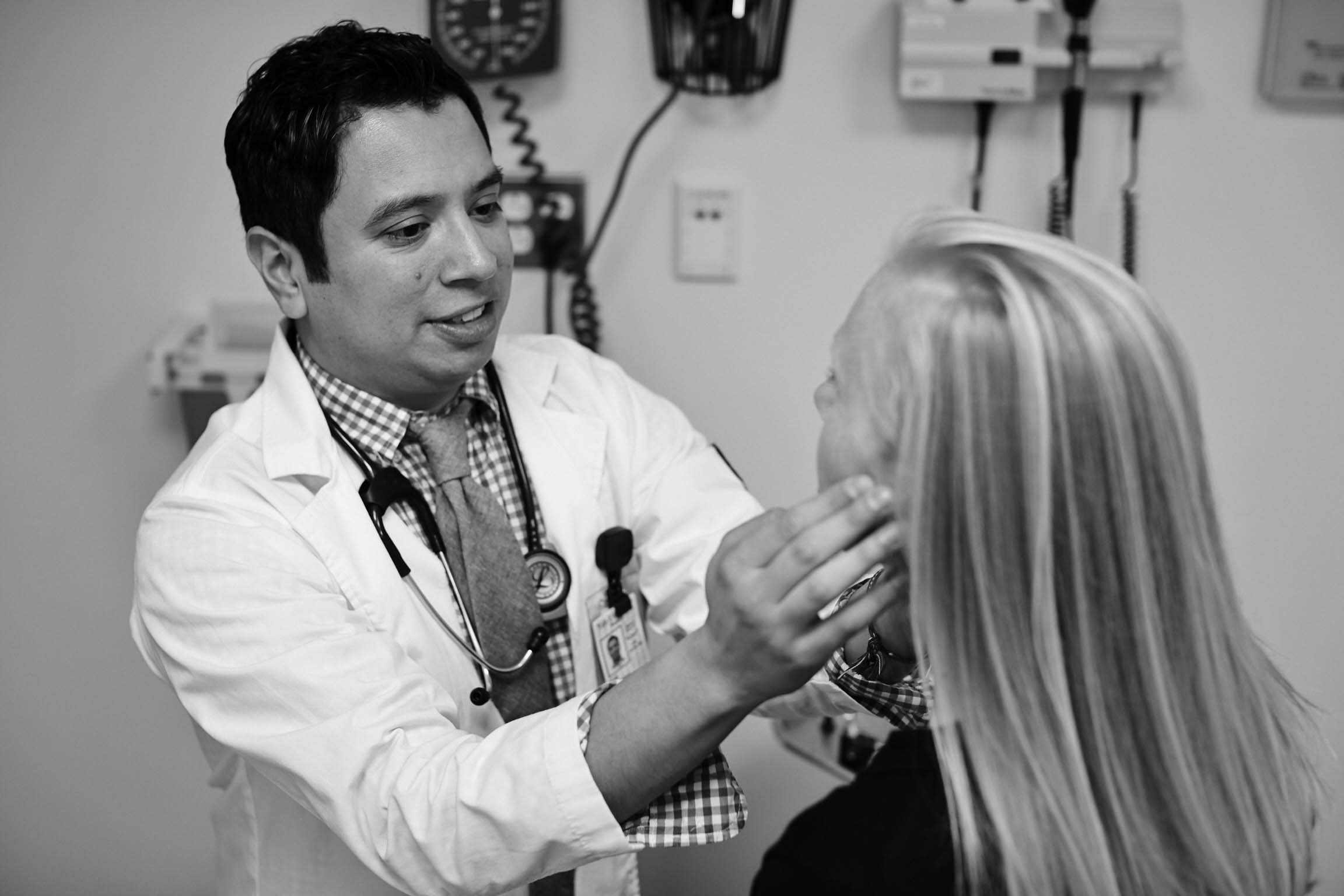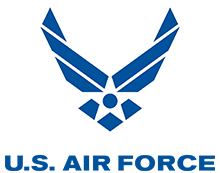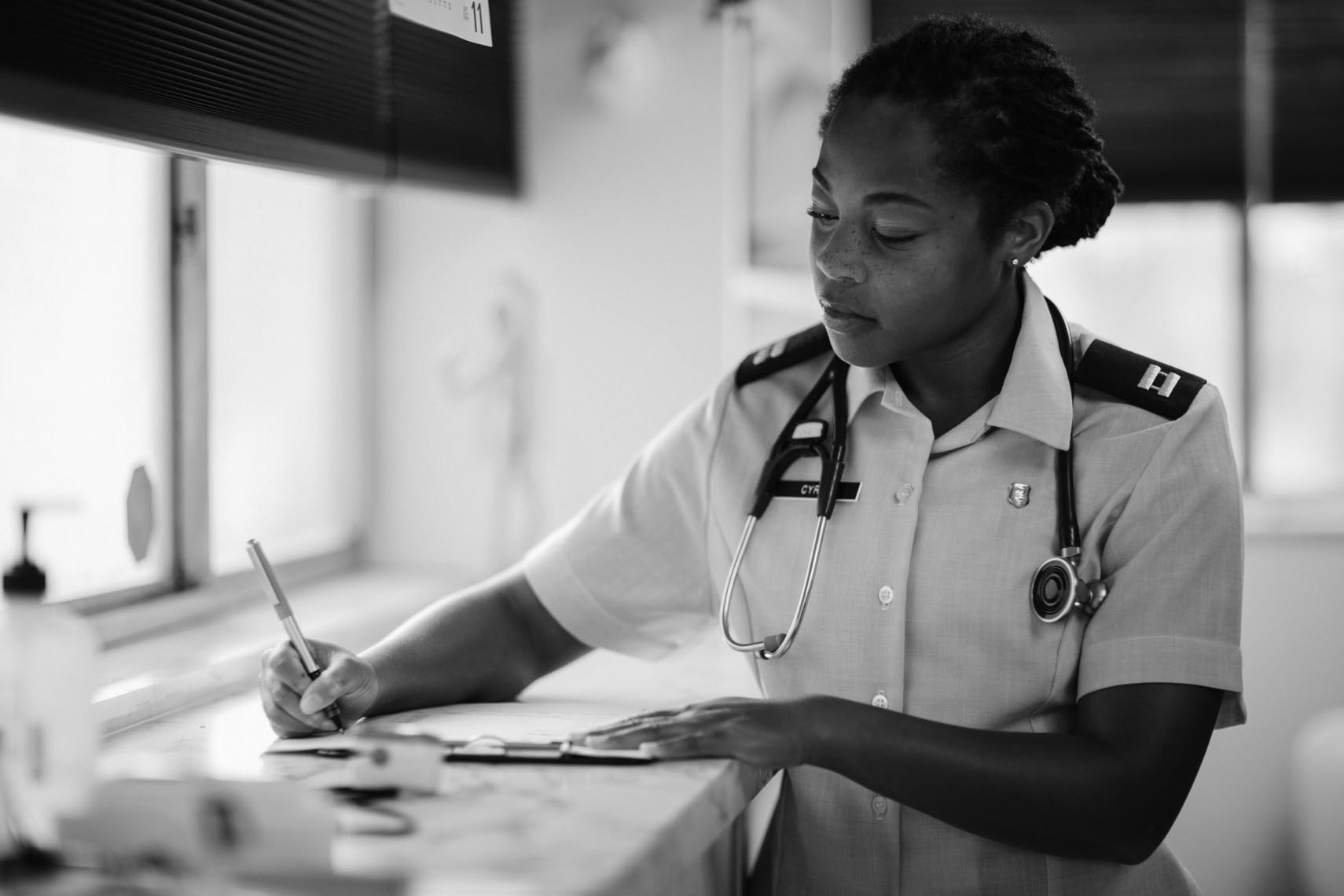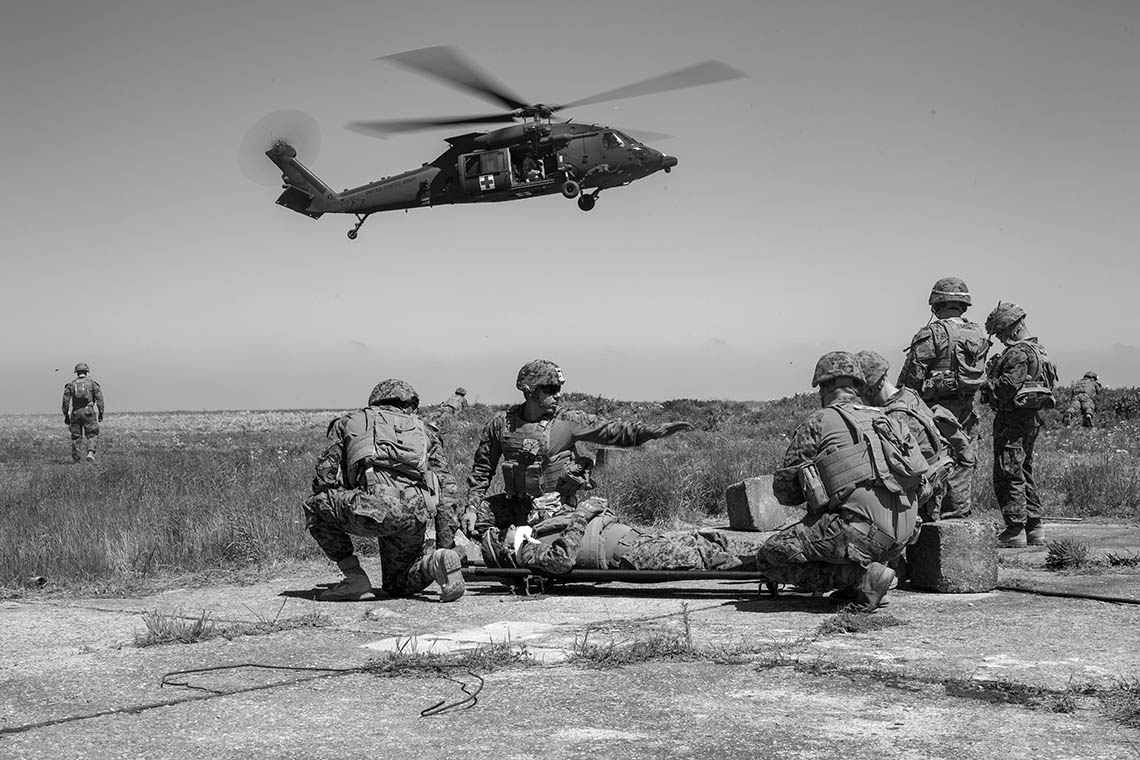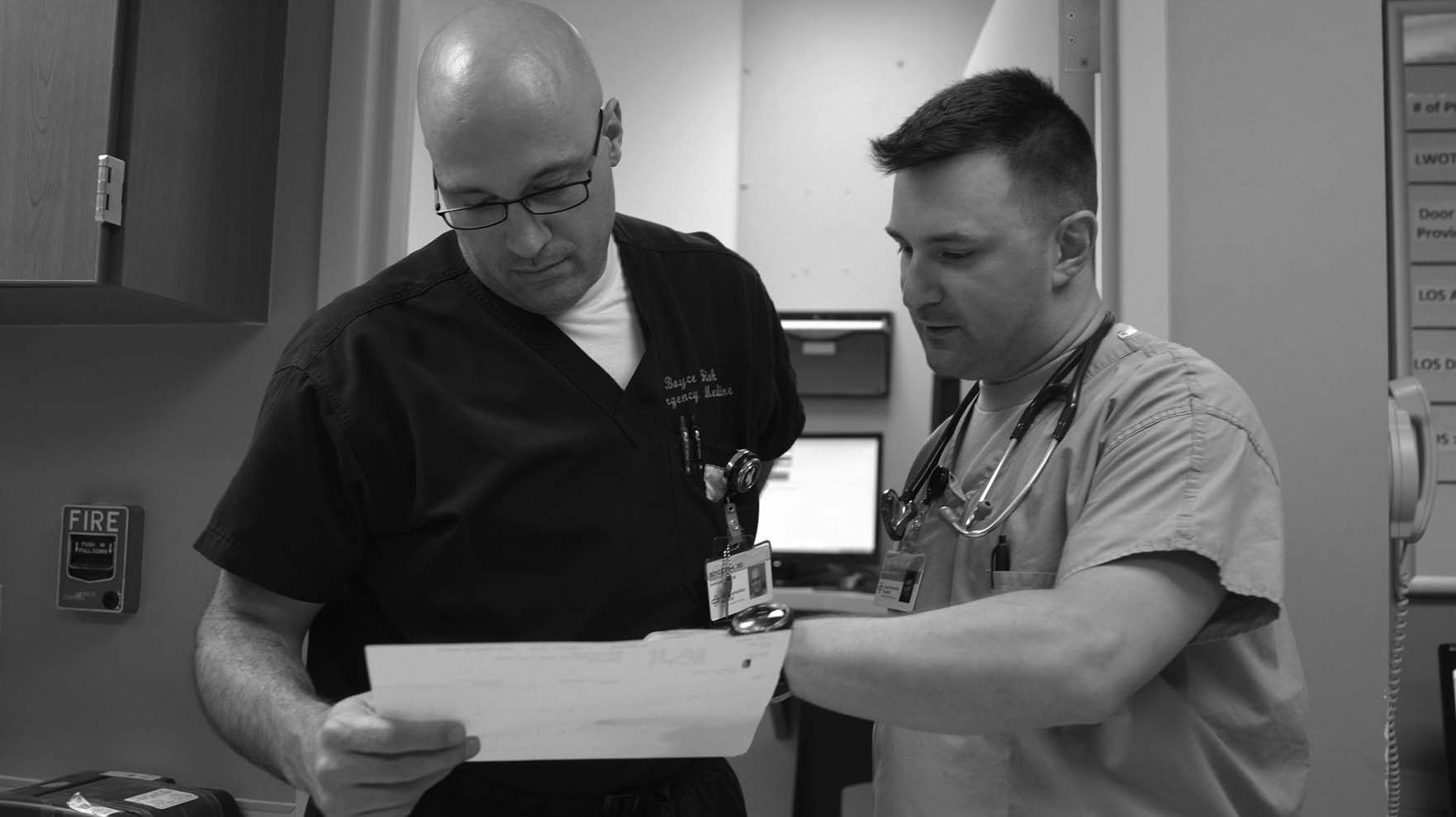- FAQs
- |
Military Service + Work Environment

As a military physician, you’ll serve your country and the world. With facilities and deployments available to you from around the globe, your medical practice offers a range of experiences and care that few civilian roles can match, which include humanitarian response and disaster recovery for some of the world’s most vulnerable populations.
Ask an Airman: What Is Deployment Like?
Hear from Air Force service members as they share their experiences working at a medical center.
Ask an Airman: What Is Deployment Like?
Hear from Air Force service members as they share their experiences working at a medical center.
BRINKMAN: So pharmacists do deploy. There are a variety of locations that pharmacists
deploy to. We're a part of a lot of the teams that are in critical care transport, not necessarily on the plains but we're there ready for the patient's as they arrive to make sure that we're providing great care for them.
ADKINS: You are often in areas that are a steer remote, removed from everyone, everything you know. It's like I tell my students sometimes, all the buddies you have are the ones you brought with you. So it makes for fast friendships. You get to know the people you're deployed with on a very personal level and get to appreciate them for what they are, what they can do, and some of those friendships can last a lifetime. From my first deployment, I'm still in touch with the colonel I deployed with - outstanding guy.
SPENCER: I've had the great honour to deploy six times and each one of those deployments was a little bit different because I deployed to different locations. I personally have not been deployed, but I do know what it's like to be the spouse of someone who is deployed. My wife is also a dentist for the Air Force, and she went to Kuwait. I was without her for about 6 or 7 months and it's difficult, but to see them shine and take on the responsibilities and soar to new levels was really important for me.
Day In The Life
Take a tour of a one-stop medical care facility, with Army surgeon Hunter Winegarner.

Hunter Winegarner, M.D.
Special Forces Battalion Surgeon, Army
Special Forces Clinic Tour
Hunter gives a tour of the 10th Group Special Forces clinic, which has adopted the Soldier Centered Medical Home model where soldiers receive one-stop medical care.
WINEGARNER: So here we are. We're at the 10th Group Special Forces Clinic that we share with Robinson Clinic. This is where we see all our patients every day. And this is also where patients would come if they were injured on the jump for Airborne Jumps.
We've actually just recently gone to what's called the Soldier Center Medical Home Model. And so basically the Soldier Center Medical Home is a place where a soldier can come and get all the things that they need in one stop. This hallway is mostly all exam rooms; they're multipurpose exam rooms. We have these treatment rooms; it's pretty nice to have something like this here in our clinic because we can take care of some of the sicker patients without having to send them up to the ER. We have our physical therapy room, and this is where we do a lot of our musculoskeletal physical therapy rehab. At the end of this hallway we would run into our pharmacy and our lab, and that's where patients can go and get their meds after they see us, and they can go and get blood drawn or do urine studies, those kind of things. So it's a one-stop-shop for them, so to speak.
Working here in this clinic is great, because, you know, we're a pretty small little family; this is a one place where all our patients can come and just get everything that they need, and we're here basically every single day, from morning till evening, unless we're out in the field doing something with the guys. And so our guys know that they can come here and find this if they need something from us.
Returning to Make a Difference
Learn more about the incredible experience one Army service member gained from humanitarian missions.
Returning to Make a Difference
Learn more about the incredible experience one Army service member gained from humanitarian missions.
MARTINEZ: So I’ve been here for two weeks and I’m already experiencing these great changes and differences that we make for this country and I’m really enjoying it. I have nothing the culture's not new to me I left this country when I was six years old. I I grew up in a in a very poor home water would come to our house once a week. I used to go out selling frozen kool-aid bags so that we'd have money at home so from that change to who I am now makes me want to work even harder to help and make a difference into other people's life.
Being able to refamiliarize myself with my culture it is an extreme blessing I um you know I want to capitalize on that and. I may not be able to help every person but the few people that we help it just makes a whole difference.
I’ve seen all these major branches here and I feel I feel important being part of this. I feel like it's a great work and um I I think it's just incredible how we have all this equipment and we're able to help the people after heal. they've expressed their gratitude and that's all that that we ask for in return and and they they show it they show their gratitude and. I’ve been asked by several of the local people in Honduras how long have you been here and when do you leave? I tell them I’ve been here two weeks and I leave in august their response is that's forever away. For me that's not enough time. there's so much work to do but when I leave this place I want to feel like I can finally rest.
[Music]
Navy Medicine - HoloLens Gaming Tech Augmented Reality Trauma Training
Watch how medics use technology to support medical field operations.
Navy Medicine - HoloLens Gaming Tech Augmented Reality Trauma Training
Watch how medics use technology to support medical field operations.
NARRATOR: We have the opportunity to use a HoloLens to assist paramedics and first responders in a field amputation. What we did was we used technology originally created for gaming technology. We are streaming in for the provider that is going to be mentoring through what we call telementoring through a procedure. They can see what we see. They can hear what we audibly tell them and through a little bit of surrounding sound. If we had a patient that couldn’t be moved or an on-scene where we couldn’t the doctors and practitioners to the scene, we would perform something like this where we use telementoring. The better we get at using it, the more we will be able to adapt it to our needs in the medical field and military. I think every year this technology gets better. It gets better, it gets faster, it gets smarter and easier to use. I think this is just the tip of the iceberg.

